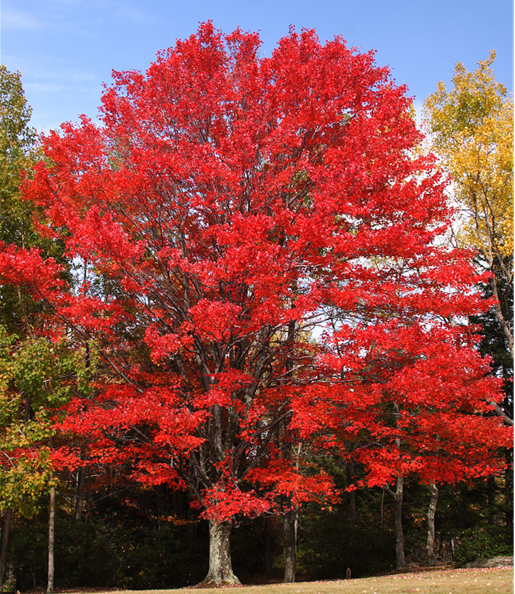Why Leaves Change Color in the Fall
Source: Sharon Flynt, UK extension horticulture agent
Fall is one of the most beautiful seasons of the year, as tree leaves change colors to bright oranges, vibrant reds and eye-popping yellows. Trees that change color in the fall are deciduous trees. They go dormant in the winter to protect the tree from freezing temperatures and will generate new leaves in the spring.
Three factors cause the tree leaves to change color at this time of year: length of night, leaf pigments and weather. Length of night is the only constant of the three. Following the summer solstice in June, the daylight shortens in the Northern Hemisphere and nights become longer. The increasing length of night triggers certain reactions in trees and leaves.
In conjunction with sunlight, chlorophyll, which produces the green color in leaves, and carotenoids, which give us the orange, yellows and browns, are working all summer to produce food for the tree. After the solstice, night length steadily increases, causing excess plant sugars to build up and chlorophyll production to slow down and eventually stop in the leaf. When chlorophyll production ceases, the carotenoid pigments are unmasked, and any anthocyanins in the leaf start producing reddish purple colors in response to bright light, giving the leaves their fall colors.
As time passes, a cell layer between the leaf petiole, which connects to the tree's stem, begins to close. Once that cell layer completely closes, the leaf drops, closing off any openings into the tree and protecting it from winter’s freezing temperatures and harsh winds.
Fall color vividness depends on temperature and moisture. Sunny, warm days, cool nights, and soil moisture in early fall produce the most color. This combination of moisture and temperature produces a vast array of colors, and that’s why no two autumns are ever alike.


